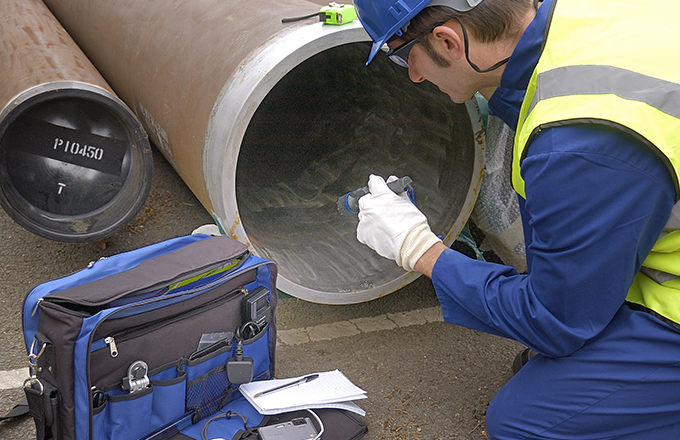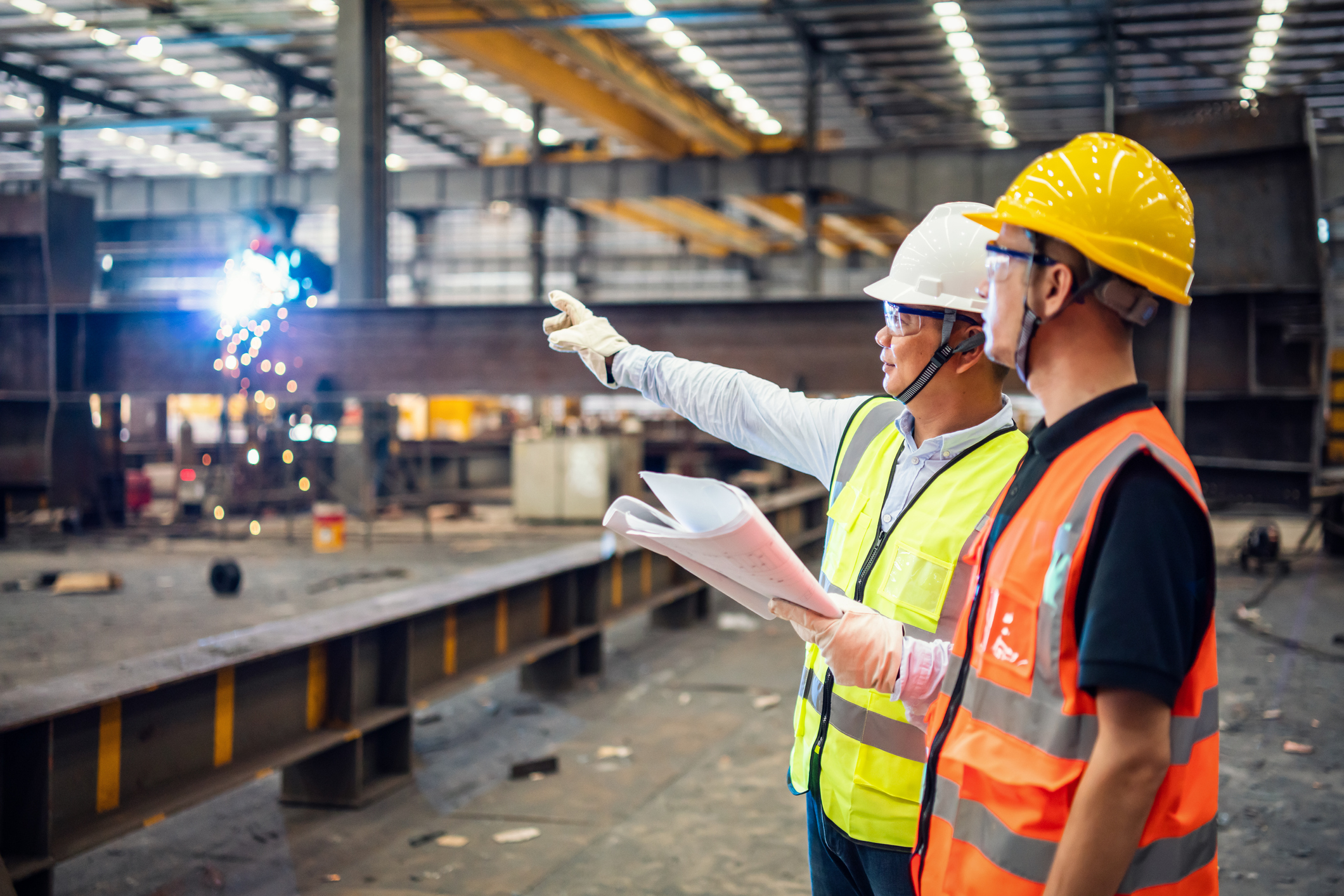The Role of Technology in Modern Welding Inspection Madison Practices
Exploring Advanced Equipment and Methods for Accurate Welding Inspection
In the world of welding inspection, the quest of accuracy and integrity is critical, stimulating the advancement of cutting-edge tools and methods. Laser scanning advancements and automated inspection systems, outfitted with synthetic intelligence, are redefining the landscape by minimizing human error and improving safety and security procedures.
Ultrasonic Testing Technologies
Ultrasonic screening innovations frequently stand for the forefront of advancements in welding examination innovations. These innovations have actually dramatically enhanced the ability to identify and examine discontinuities within welded frameworks, guaranteeing enhanced honesty and security - Welding Inspection Madison. Ultrasonic testing uses high-frequency acoustic waves to pass through products, supplying in-depth information regarding internal functions without triggering damages. The most up to date advancements in this field have concentrated on raising accuracy, speed, and the capability to analyze complicated data.

In addition, improvements in software program algorithms for information analysis have actually improved the accuracy of flaw detection and sizing. Automated ultrasonic screening systems currently supply high-resolution imaging, enabling detailed assessments of weld quality. These systems are usually integrated with innovative visualization devices, which promote the interpretation of outcomes.
Radiographic Evaluation Techniques
While ultrasonic testing technologies have actually established a high requirement in non-destructive assessment, radiographic assessment techniques proceed to play an important role in welding assessment by offering special understandings into material integrity. Radiographic screening (RT) uses using X-rays or gamma rays to permeate products, developing a radiograph that visually represents the internal structure of a weld. This imaging capability is vital for spotting subsurface flaws such as porosity, inclusions, and fractures that may not be noticeable with surface examinations.
The process includes positioning a radiation source on one side of the weld and a detector on the contrary side. Variants in product density and thickness impact the depletion of the rays, creating a different picture that exactly defines flaws. RT is specifically beneficial for inspecting complex geometries and thick sections where other approaches may drop short.
Regardless of its efficiency, radiographic inspection needs to be carried out with strict adherence to security methods due to the unsafe nature of ionizing radiation. Moreover, the analysis of radiographs calls for competent employees, as the top quality of the analysis directly affects the dependability of the inspection. Ongoing advancements in electronic radiography are boosting image clearness and analysis effectiveness, strengthening RT's critical role in ensuring weld quality.
Laser Scanning Advances
Accepting laser scanning technology in welding inspection has actually transformed the analysis of weld high quality and my sources honesty. Unlike traditional assessment techniques, laser scanning provides quick information acquisition, dramatically improving the performance and precision of weld assessments.
Laser scanning developments have actually led to significant improvements in spotting and defining surface area problems such as porosity, lack of fusion, and damages. The high-resolution data makes it possible for assessors to carry out thorough analyses, ensuring that welds meet rigid market criteria. This technique supports the development of digital records, promoting long-lasting quality guarantee and traceability.
In addition, laser scanning innovation incorporates seamlessly with software solutions created for automated problem discovery and assessment. The resultant information can be conveniently shared and reviewed, promoting joint decision-making processes. As industries proceed to require greater criteria for weld top quality, laser scanning remains at the forefront, using exceptional accuracy and efficiency in welding assessment.
Automated Assessment Equipments

Automated assessment systems offer the benefit of consistency, eliminating human mistake and subjectivity from the inspection procedure. They are created to run in various atmospheres, from manufacturing floors to remote area websites, guaranteeing thorough coverage. Welding Inspection Madison. These systems can be set to abide by specific welding criteria and requirements, offering in-depth reports and paperwork for quality assurance objectives
Furthermore, the combination of cloud-based platforms assists in the storage space and analysis of large quantities of assessment information. This makes it possible for trend evaluation and anticipating upkeep, enabling producers to resolve possible issues before they rise. The fostering of computerized examination systems is a critical relocation towards enhancing the dependability and effectiveness of welding procedures in industrial applications.

Enhancing Security and Efficiency
A considerable element of improving security and efficiency in welding inspection hinges on the integration of innovative modern technologies that streamline operations and minimize threats. The fostering of sophisticated non-destructive screening (NDT) techniques, such as ultrasonic screening, phased range ultrasonic screening (PAUT), and radiographic testing, plays a crucial function in ensuring architectural integrity without compromising the safety and security of the workers entailed. These techniques enable extensive evaluations with marginal downtime, lowering prospective threats related see it here to standard approaches.
Additionally, the execution of real-time data analytics and maker knowing algorithms has changed the way inspection data is interpreted. By employing anticipating analytics, possible flaws can be determined prior to they manifest right into critical failings, making sure prompt treatments and upkeep. This proactive strategy dramatically enhances functional performance and safety and security in welding procedures.
Additionally, remote examination innovations, consisting of drones and robotic crawlers geared up with high-resolution cams, make it possible for assessors to assess hard-to-reach areas without revealing them to hazardous problems. This not only improves inspection accuracy but additionally decreases human threat. By leveraging these innovative devices and techniques, industries can accomplish greater safety and security criteria and functional performance, ultimately leading to more sustainable and trusted welding inspection practices.
Conclusion
The assimilation of sophisticated tools and methods in welding inspection considerably enhances problem discovery and makes sure structural integrity. These improvements not just enhance evaluation efficiency however likewise contribute to boosted safety and quality guarantee in industrial welding applications.

Ultrasonic screening developments frequently stand for the leading edge of innovations in welding evaluation innovations.While ultrasonic testing innovations have set a high criterion in non-destructive examination, radiographic inspection strategies proceed to play an essential function in welding inspection by supplying one-of-a-kind click resources insights right into material honesty.Welcoming laser scanning modern technology in welding examination has actually revolutionized the evaluation of weld top quality and stability. As markets continue to demand higher standards for weld quality, laser scanning continues to be at the forefront, using exceptional accuracy and efficiency in welding assessment.
Automated evaluation systems offer the advantage of consistency, eliminating human mistake and subjectivity from the inspection process.